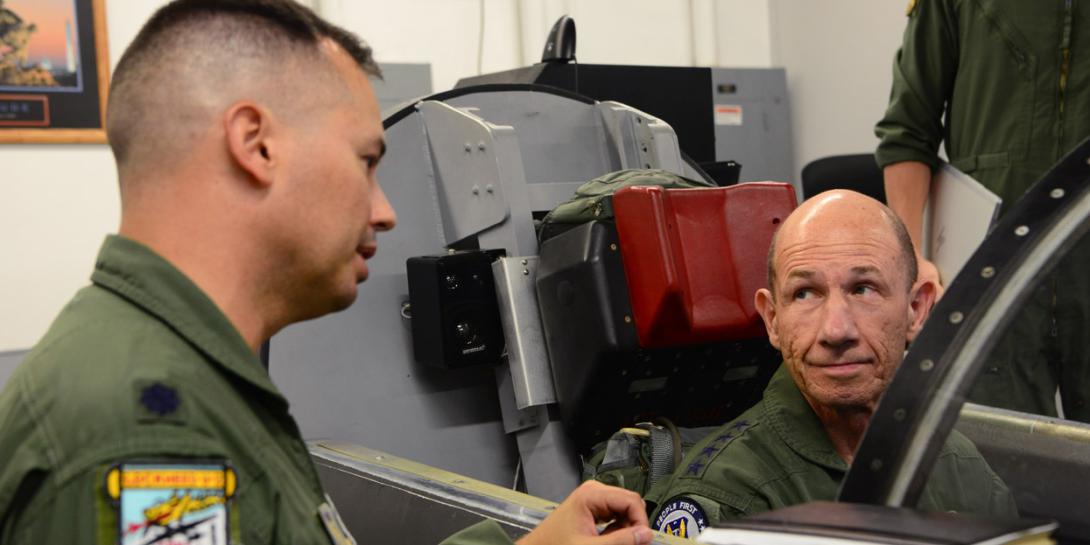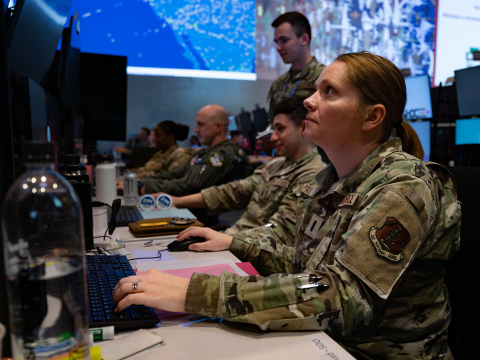Getting to Joint Warfighting
The necessity of multidomain operations to combat near-peer adversaries in the future dictates that the U.S. military fight together seamlessly across the air, land, sea, space and cyber environments. The services must be able to generate offensive and defensive effects from all of these domains, with systems in one environment supporting operations in another domain, said Gen. Mike Holmes, USAF, commander, Air Combat Command, speaking Tuesday at AFCEA International and IEEE’s MILCOM conference in Norfolk, Virginia.
“As my friend Eric Wesley, commander of the Army Futures Command says, it's connecting every sensor, connecting every shooter through every command and control (C2) node, because we have to operate in a distributed way across the battlefield,” Gen. Holmes said.
Joint all-domain C2, or JADC2, is fostered by the integration of a complex grid of sensors—needed to provide leaders with decision advantage—as well as advanced networking. It also hinges on a robust advanced battle management system, (ABMS) and the ability to converge the desired joint effects.
Currently, the Joint Forces are working on the so-called ABMS ONE, beginning with the on-ramping of related components, starting in December, including dataOne, for brokered data that provides space situational awareness, Gen. Holmes stated.
“We know, first, that multidomain operations and JADC2 are a joint problem and require joint solutions,” the commander said. “It is much bigger than the Air Force. When our young officers and our young NCOs go wargame, [and see] the threats posed by the governments of China and Russia, inevitably, they come back and they tell us, ‘We need purple command and control.' We could not move fast enough trying to do green commanding control in the Army and light blue C2 in the Air Force and dark blue C2 in the Navy."
Air Combat Command: @USAF_ACC Gen. Mike Holmes @ACC_Commander: Neither the governments of Russia or China feel deterred from acting just below the level of armed conflict. #MILCOM @AFCEA @IEEEorg pic.twitter.com/bA2T53naZt
— Kimberly Underwood (@Kunderwood_SGNL) November 12, 2019
Gen. Holmes drew a comparison to the adroitness of ride sharing platforms, considering how the military could pull from the playbook of this commercial contribution. To apply such a platform—like Uber—to the military, of course, “it’s much more complex,” he acknowledged. However, a ride sharing software platform quickly calls up multiple targets, or people looking for a ride, and pairs them with multiple resources, the drivers. “There are ways for us to do this,” he noted. “There are people around our country and around the world that have spent a whole lot of time figuring out how to do this.”
In the meantime, the Air Force will conduct exercises and other wargames, both in the service and with Joint forces, to figure it out how a potential JADC2 could look. “It has to have sensors that are integrated,” the general stressed. “It has to take that data and put it together in a way that anybody can get to and it's readily available. You have to have secure processing capability that can sort through the data with algorithms, and give you answers that you believe. It has to connect sensors to shooters in command and control.”
On the Air Force side, the service’s chief architect, Preston Dunlap, along with the Air Force Warfighting Integration Center, is tasked with developing the relative concepts, starting with digital architecture standards and concepts. “We have several programs now where we're working with you, the industry, to develop a government reference architecture.” The leaders also envision C2 actually happening “as a series of apps built on top of this network to eventually then provide the integrated effects,” the commander added.
Supported by that kind of C2, ultimately, the military’s goal is to provide “high velocity, operationally agile operations that present multiple dilemmas for an adversary at an operational tempo that they cannot match,” Gen. Holmes explained. “[Because in the future] there are no more boundaries on the battlefield. There's no safe port, there's no safe marshaling areas, there is no safe place. Anybody can reach from anywhere on the battlefield.”





Comments